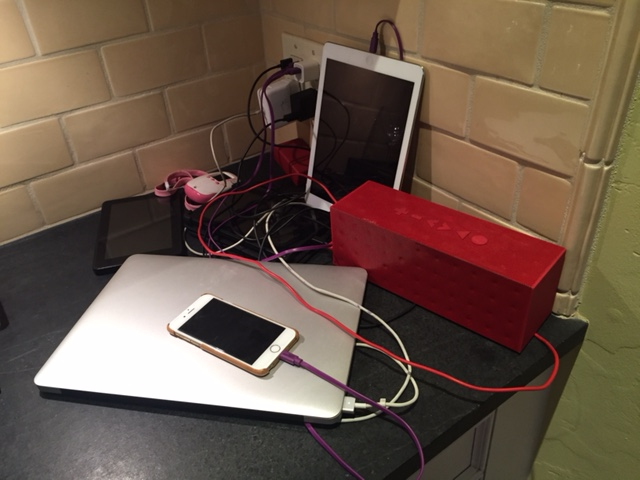SSZTBX8 november 2015 TPS25810 , TPS65982 , TUSB320
[Scene: Greg Waterfall and Jim Bird pack up after their fifth conference call for the day and head to the cafeteria.]
Greg:
Jim, I’m getting tired of hauling around all of these different charger adapters and cables to recharge my electronics. Even worse is the mess at home. My family’s phones, notebooks, cameras and toys all seem to have their own chargers.

Jim:
I hate it too. I’ve probably got three pounds of charging hardware that I haul around in my laptop bag. The good news is that Type-C is coming… well, actually it’s here.
Greg:
Type-C? Do you mean USB Type-C? Isn’t that just a new connector for USB? Great. That just means I’ll have yet another adapter to haul around. Why did they even come up with that?
Jim:
Don’t worry! USB Type-C is going to solve many of the issues that give you such pain. Type-C, along with its sister spec, USB Power Delivery (PD), will get you down to one or two adapters for everything. And… wait for it… there’s only one cable, and it’s impossible to plug in wrong. The same reversible connector on each end makes it so easy, you can do it while blindfolded. It’s true... I tried it!
Greg:
That does sound too good to be true. Like that time you told me that eating three cheeseburgers was no problem. That did not work out too well.
Jim:
A rookie error for both of us; I told you not to attempt it in one sitting! Anyway, Type-C is for real. It’s a lot of work to make it easy, and the USB Implementers Forum has done that work. It’s backward-compatible with earlier versions of the USB standard and enables USB PD.
Greg:
What’s PD?
Jim:
It stands for power delivery and enables power to the load of up to 100W; existing USB only allows for 10W. Now do you see the possibilities? One connector for all of your applications. One standard to charge them all, one standard to…
Greg:
Don’t go all “Lord of the Rings” on me. I still don’t understand how one connector can do all of that. I know that USB Type-A was able to deliver higher currents with some tricks, but how are you going to get 100W with 5V? A 20A cable is going to get pretty warm or be the size of a 12-gauge Romex. I don’t see how I’m going to roll up a meter of that and put it in my briefcase.
Jim:
Be cool, Greg. Higher voltage is on the way. And that means lower currents and lower I2R losses. 100W loads get 5A at 20V.
Greg:
You sending 20V? Shoot, Jimbo, that’s all you had to say!
Jim:
You feel better now? Our field guys sure do. We’ve been showing them the growing family of TI USB Type-C products and solutions, and they’re loving it. Some want full integration with up to 100W power delivery, and we show them the TPS65982 family. Others want simple 15W USB Type-C ports for laptops or phone chargers, and we show them the TPS25810. And that’s just two of the products available today. We’ve also got many proven TI Designs to get them going fast.
Greg:
Dang! That sounds like something that will be pretty handy for powering all of my stuff. I’m thinking I need to learn more about Type-C.
Jim:
I’m thinking you are right, and that’s easily done. Buy me a burger, and we shall discuss the powering of your stuff. Buy me two, and perhaps we can move on to the topic of Alternate Modes…
If you too think you need to learn more about Type-C, see these additional resources:
- Learn about the TUSB320, which enables USB Type-C ports with the configuration channel logic needed for Type-C ecosystems.
- Read more about how Type-C will make life easier.